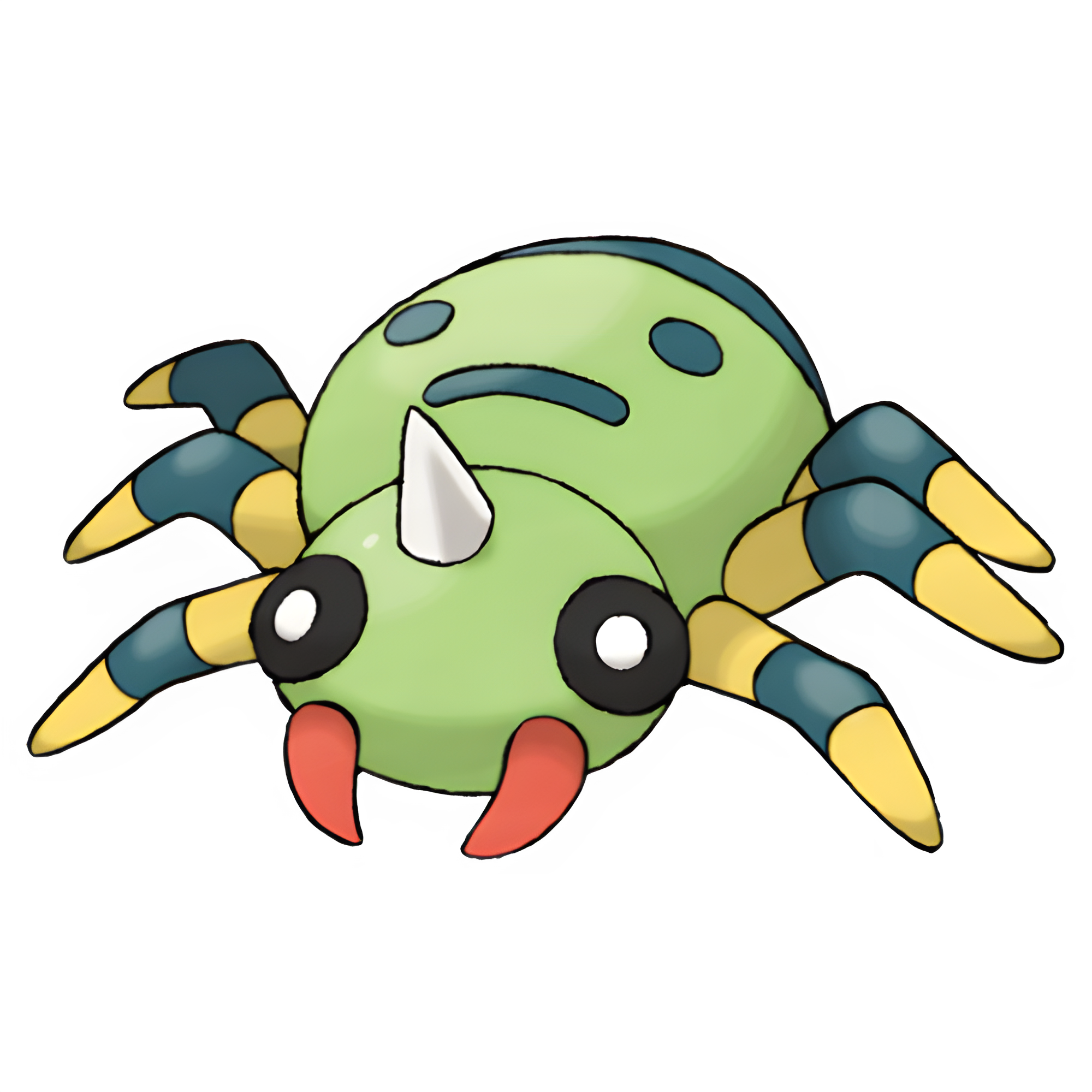Spinarak Facts for Kids
Spinarak is a small, spider-like Pokémon that utilizes webs to catch prey and has a unique appearance with distinct red spots.
View Article For:

Related Articles
Introduction
️ It first appeared in the Pokémon games in 1996 and is part of the Johto region. Spinarak is a Bug/Poison-type Pokémon, known for its green body and red markings on its back. It is about 1 foot tall and weighs around 11 pounds! Spinarak evolves into Ariados at level 22. As a Pokémon, Spinarak uses its web to catch prey and has a special ability called "Insomnia" to avoid being put to sleep. Would you want a Spinarak for a pet?
Diet And Feeding
Its webs trap these bugs, making it easy for Spinarak to enjoy a nice meal. Using a technique called “chelicerae,” which are like fangs, Spinarak can inject venom into its prey to keep it still. When it finishes eating, Spinarak can even eat its web to recycle nutrients! In the wild, every creature plays a role, and Spinarak helps to keep the balance in its environment. What’s your favorite bug snack?
In Popular Media
Biology And Anatomy
Conservation Status
Behavior And Ecology
Cultural Significance
Habitat And Distribution
Life Cycle And Reproduction
First, it begins as an egg that hatches into a baby Spinarak. When it reaches level 22, it evolves into Ariados. During its life, Spinarak also lays eggs, which are usually hidden in leaves or under rocks. The eggs feel soft and protect the babies until they’re ready to hatch! This cycle continues, helping Spinarak populations grow. In nature, it’s crucial for species to reproduce to ensure their survival. Isn’t it cool how life continues?
DIY is a humongous library of
activities and courses for kids.
Curious?
Gallery of
Did you know?
🕷️ Spinarak is a Bug/Poison-type Pokémon introduced in Generation II.
🌐 It is known as the Pokémon that resembles a spider and is often found in forests.
🌙 Spinarak has a unique ability to produce silk, which it uses to make webs.
🔍 Its distinctive marking on its body resembles a spider's web.
🌧️ Spinarak can be found in dark, humid places, making it a common sight at night.
🕸️ It evolves into Ariados starting at level 22.
👀 Spinarak's eyes help it detect movements in its web.
🍂 The silk it produces is incredibly sticky, aiding in trapping prey.
⚖️ Spinarak weighs approximately 11.5 lbs (5.2 kg).
🏆 Its Pokédex number is #167.


